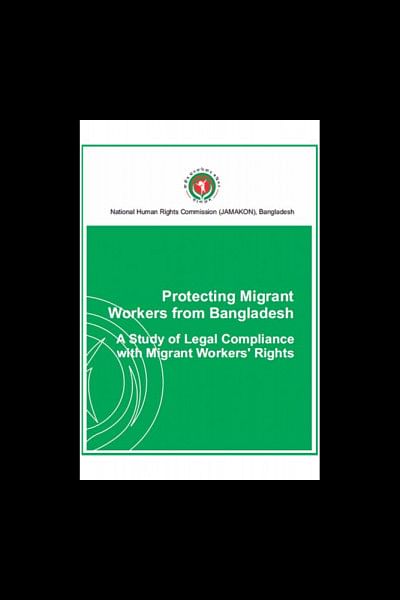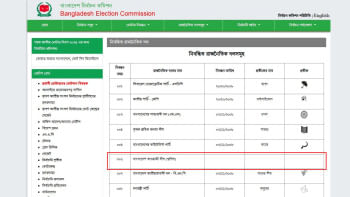Protecting the rights of migrant workers

With an aim to protect the rights of Bangladesh's economic migrants by enhancing the capacity of National Human Rights Commission, the UNDP-Bangladesh has recently published a study report titled 'Protecting Migrant Workers from Bangladesh: A Study of Legal Compliance with Migrant Workers' Rights' (2014). Prepared by Dr. Ridwanul Hoque, an associate professor of law at the University of Dhaka, the report basically accesses the compliance level of Bangladesh's laws, policies and practices with the UN International Convention on the Protection of the Rights of All Migrant Workers and Members of their Families 1990 (shortly known as MWC), and also analyses how compliance can be better ensured by the destination countries.
The report argues that the MWC is just one of a set of several human rights treaties and as such, other major human rights treaties and several ILO Conventions concerning the labour rights have an operative regime of rights protection for migrant workers. Uniquely, the report explains that the majority of rights enshrined in the MWC reflect the globally agreed highly normative standards, some of which have assumed the character of non-derogable basic rights. Hence, even the States that have not signed or ratified the MWC have an obligation under the general rules of international law to protect and provide the rights of migrant workers.
Divided into six chapters, the introduction of this report in chapter 1 describes the content of the MWC and justifies that protection of the rights of migrant workers has been the subject matter of major human rights treaties of general application such as UDHR, ICCPR, ICESCR, CEDAW and so on. By referring to the UN Convention against Transnational Organized Crime 2000, this chapter highlights the situation of human trafficking and smuggling of migrants across the world, and addresses the inadequate protection regime for them under international law. Changing landscape of labour migration has been identified as one of the crucial points of existing inadequate protection regime. Such changes, as per the report, include the decreasing significance of the State in recruiting migrant workers and the increasing importance of private agents with a considerable growth in irregular migration.
Chapter 2 gives an overview of the rights of migrant workers and of obligations of State Parties, while the third chapter describes and analyses the legal rights regime of Bangladesh vis-à-vis migrant workers. Relevant constitutional provisions, the Overseas Employment Policy 2006, the Emigration Ordinance 1982 and the Anti-Human Trafficking Act 2012 have been discussed in reference to measures so far Bangladesh government has taken for the protection of Bangladesh's migrant workers overseas against the phenomenon of cross-border human trafficking.
Based on the discussions in chapters 2 and 3, chapter 4 analyses the compatibility of Bangladeshi laws and practices with the MWC, and looks for any vacuum in the existing laws and practices. This chapter highlights the challenges in managing Wage Earners' Welfare Fund, controlling illicit recruiting agencies and delivering effective remedy through the trial of offences related to human trafficking and others.
Chapter 5 focuses on compliance with the MWC and seeks to reconcile the duty of Bangladesh to meet its own obligations under the Convention coupled with the challenges in achieving some measure of compliance by migrant-receiving countries that have not undertaken such obligations. The final chapter summarises the key findings and draws a set of recommendations defining the areas in which legal, administrative and judicial actions are required in order to protect and improve the rights of Bangladeshi migrant workers under the Convention.
THE WRITER IS AN LLM STUDENT AT THE UNIVERSITY OF DHAKA.

 For all latest news, follow The Daily Star's Google News channel.
For all latest news, follow The Daily Star's Google News channel. 



Comments